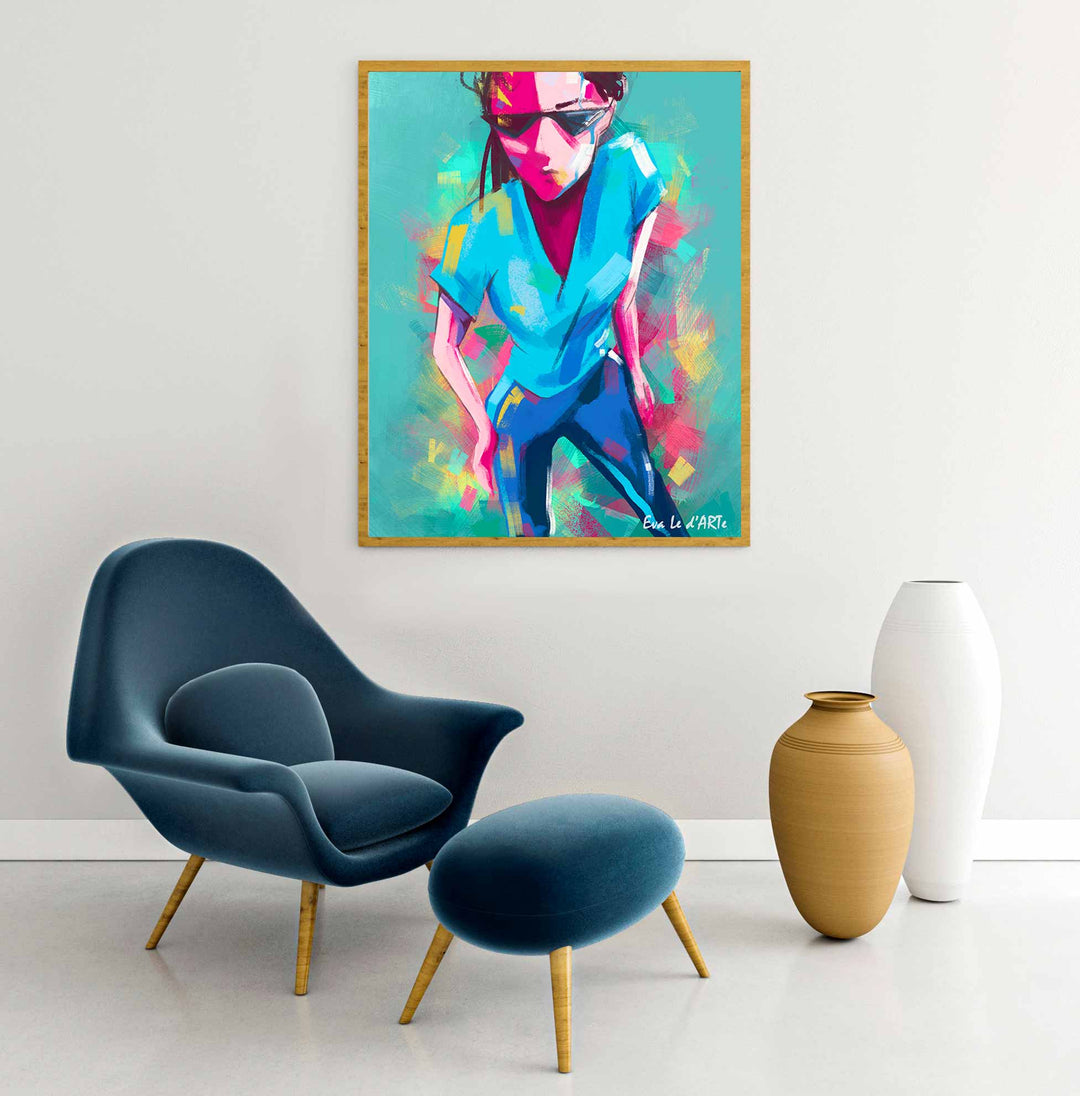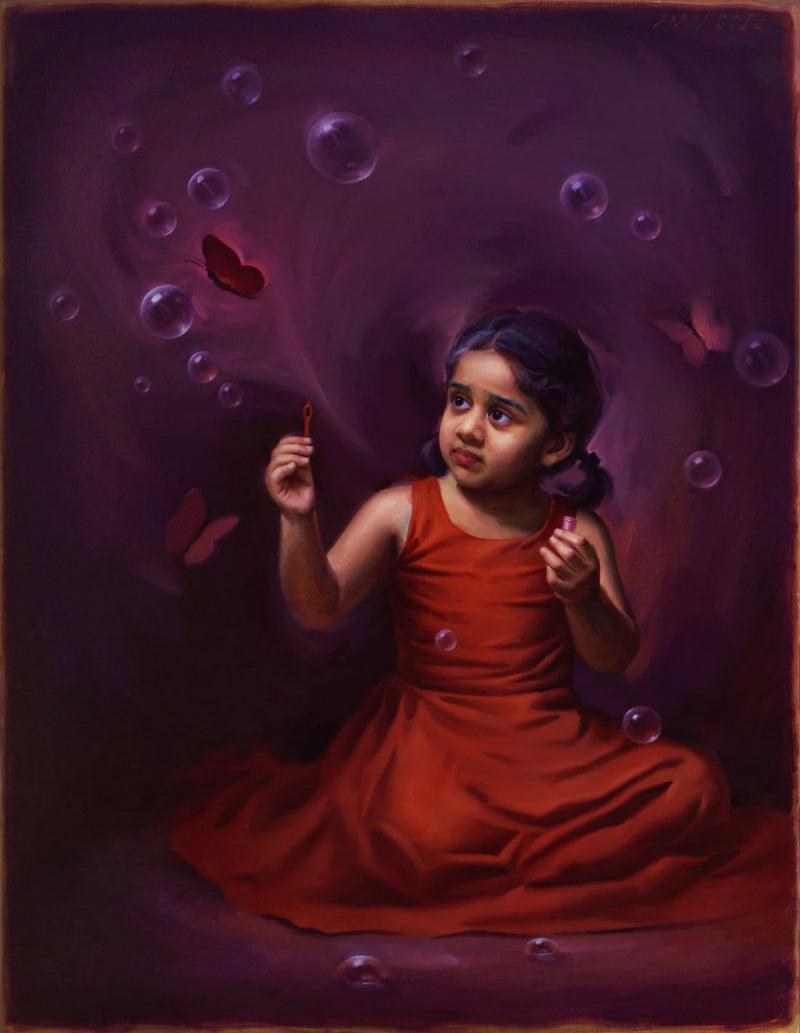Exploring the Depths of Feeling with Figurative Oil Painting Methods
The Advancement of Metaphorical Oil Paint: Comprehending Its Historic Significance and Modern Interpretations
The advancement of figurative oil painting offers as a compelling lens via which to check out the interplay in between imaginative expression and historic context. Contemporary musicians, drawing from this rich heritage, are now reinterpreting the human figure in means that challenge typical narratives.
Origins of Metaphorical Oil Painting
The beginnings of figurative oil paint can be mapped back to the very early Renaissance in Europe, specifically in the 15th century. This period marked a considerable separation from the level depictions and inflexible types characteristic of medieval art. Musicians began to explore naturalism, emphasizing the human number and its psychological expression. The advancement of oil paint enabled greater depth of shade and detail, enhancing the realistic look and vibrancy of their job.

In this transformative era, numbers were typically portrayed within contextually abundant environments, showcasing not only their physical attributes yet additionally their psychological states. Pioneers such as Jan van Eyck and Titian took advantage of the tool's flexibility, using layering methods to accomplish luminance and structure. This technology facilitated the portrayal of elaborate textiles and the subtleties of complexion, adding to the growth of portraiture and narrative scenes.
Moreover, the Renaissance emphasis on humanism fostered a recognition for distinctiveness, which in turn influenced musicians to produce more dynamic and relatable numbers - figurative oil painting. As an outcome, metaphorical oil painting arised as a powerful lorry for narration and psychological interaction, preparing for future artistic motions and designs
Key Historical Movements
Substantial historic motions have shaped the development of metaphorical oil paint, each contributing unique ideologies and methods that increased the tool's opportunities. The Renaissance noted a crucial minute, stressing realistic look and the human form, with artists like Leonardo da Vinci and Michelangelo pushing the limits of anatomical accuracy and point of view. Following this, the Baroque period brought significant contrasts of light and darkness, exhibited by Caravaggio, that infused spiritual styles with extreme emotionality.
The 19th century introduced Romanticism and Realistic look, where artists such as Delacroix and Courbet tested classic perfects, concentrating on specific expression and day-to-day life. The arrival of Impressionism even more transformed the tool by emphasizing the impacts of light and color, resulting in a separation from standard depiction.
In the early 20th century, motions like Expressionism and Cubism redefined metaphorical paint through abstraction and the exploration of emotional deepness. Each of these motions not only reflected the social adjustments of their times but also laid the foundation for contemporary interpretations. The interplay in between these historic motions has created a rich tapestry of designs and philosophies, affecting modern artists in their search of catching the human experience on canvas.
Strategies and Products Advancement

Throughout the Baroque duration, methods such as chiaroscuro and sfumato arised, improving the emotional vibration of metaphorical structures. Musicians started to explore lusters and impasto, controling texture and luminance. By the 19th century, innovations like the use of pre-mixed paints in tubes changed ease of access, enabling musicians to repaint en plein air and capture the fleeting effects of light.
The 20th century experienced the intro of synthetic pigments and tools, which broadened the palette and altered the consistency of oil paints. Additionally, the expedition of new application methods, such as combination blades and brushes of varying rigidity, more varied imaginative expression. Jointly, these advancements show the progressing relationship in between materials, strategies, and the creative vision inherent in metaphorical oil painting.

Contemporary Analyses
Contemporary interpretations of figurative oil painting reflect a dynamic discussion between tradition and technology, where musicians challenge established norms and check out diverse themes. This evolution shows up in different methods, as contemporary artists mix classical techniques with contemporary ideas, frequently addressing social, political, and individual narratives.
Many specialists attract motivation from historical jobs, yet they infuse their items with contemporary perspectives, making use of the human form as an automobile for commentary on sex, identification, and culture. Artists progressively experiment with abstraction, distortion, and blended media, which allows for a broader analysis of the figure and its context.
Moreover, making use of vibrant shade palettes and non-traditional structures commonly serves to interrupt conventional seeing experiences, prompting crucial engagement from target markets. This shift in emphasis prolongs past aesthetic appeals; it shows a growing awareness of the complexities of human experience in an interconnected globe.
As figurative oil painting remains to progress, it remains a vital tool for discovering the subtleties of contemporary life, personifying both a regard for heritage and a commitment to dynamic thought. The outcome is an abundant tapestry of expression that resonates with look what i found the intricacies of the contemporary human problem.
Influence On Modern Art
The effect of figurative oil paint on modern-day art is extensive, as it has actually continuously inspired a myriad of creative movements and practices throughout the 21st and 20th centuries. From Expressionism to Surrealism and beyond, the expedition of the human number has actually stayed a main theme, allowing musicians to convey complex feelings and narratives. This focus on figurative depiction has actually resulted in a re-examination of traditional techniques, leading to cutting-edge strategies that blend realistic look with abstraction.
Furthermore, modern artists have actually embraced figurative oil painting as a means to resolve political and social concerns, using the tool to test assumptions of identity, society, and gender. The revival of interest in figurative operate in current years shows a wishing for link in an increasingly digital globe, where human experience and feeling are paramount.
Furthermore, the discussion in between metaphorical oil paint and modern art is obvious in the works of musicians such as Kehinde Wiley and Jenny Saville, that attract on historical recommendations while instilling Visit This Link their pieces with modern importance. Eventually, figurative oil painting proceeds to form and redefine contemporary artistic expression, emphasizing its long-lasting significance in the art globe.
Conclusion
The evolution of figurative oil painting highlights its historic value and adaptability across different artistic motions. From the naturalism of the Renaissance to the emotive expressions of the Baroque and the innovative methods of modernity, this tool has actually constantly changed. Contemporary interpretations reflect vibrant shades and non-traditional make-ups, fostering important involvement with social and political motifs. Inevitably, figurative oil painting remains an important medium for exploring the human experience, resonating exceptionally in today's electronic landscape.
The advancement of figurative oil paint offers as an engaging lens through which to analyze the interplay between imaginative expression and historical context.Significant historical activities have actually shaped the evolution of figurative oil painting, each contributing unique ideologies and methods that expanded the tool's possibilities.As historic activities formed the trajectory of figurative oil paint, the materials and strategies employed by artists have actually likewise undergone considerable changes. figurative oil painting.The impact of metaphorical oil paint on modern art is extensive, as it has continually look at this website inspired a myriad of imaginative motions and methods throughout the 21st and 20th centuries.The development of metaphorical oil painting underscores its historical relevance and versatility throughout various artistic motions